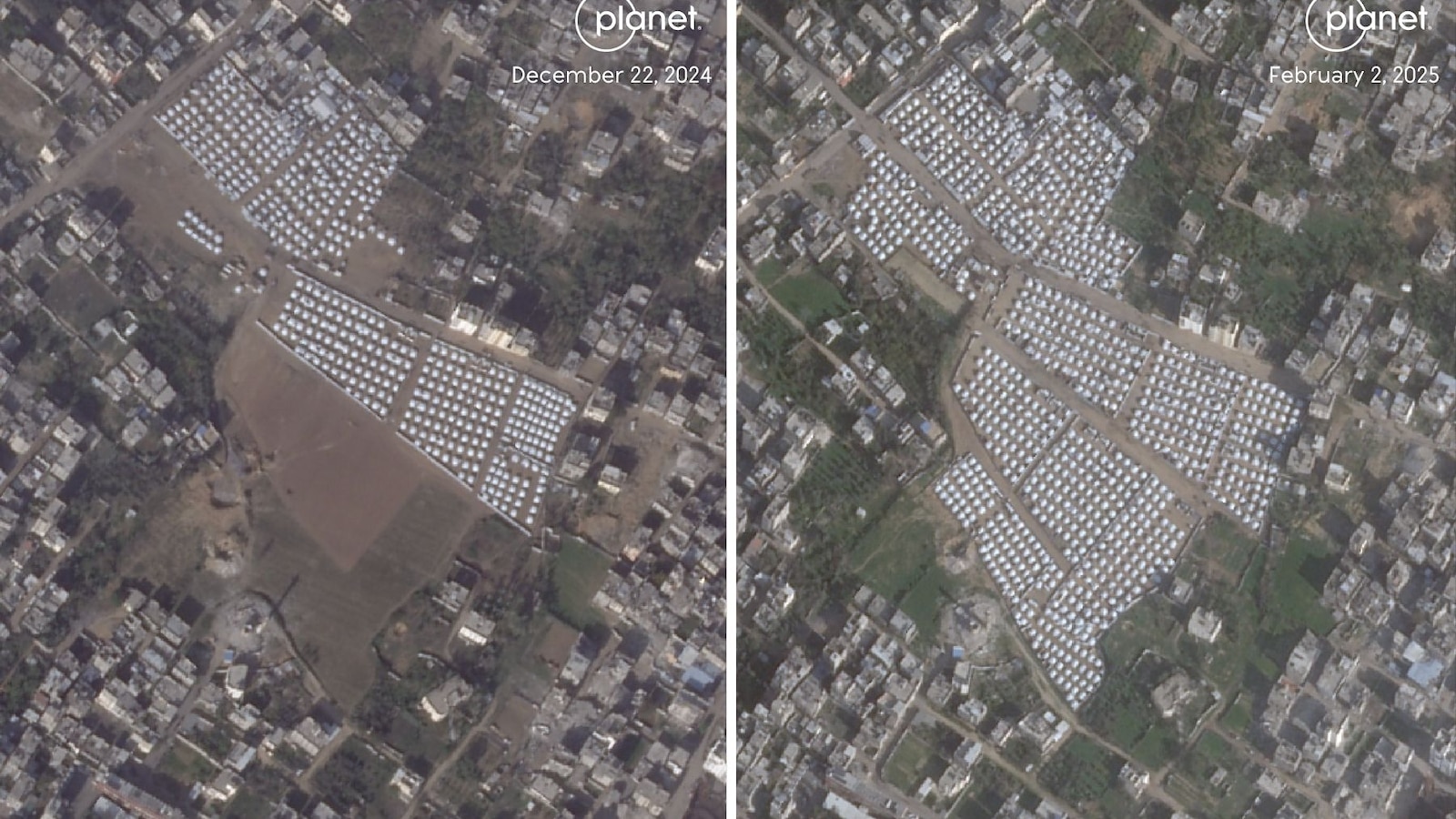LONDON and GAZA — As President Donald Trump proposes the United States “take over” Gaza, and repeatedly says its residents should be relocated, a visual analysis of satellite imagery and video of northern Gaza indicates thousands of people have returned and set up tents atop their destroyed homes in anticipation of rebuilding their lives there.
Despite Trump’s assertion that Gaza is a “demolition site” where people “can’t live,” Palestinians returning to the destruction in the north tell ABC News they are determined to rebuild.
Samir Awadallah spoke with ABC News on the ground in Gaza City, a tent already set up on the road where he was walking. “You see the people here, who lost their homes, will rebuild their homes. They have the ability and the capacity,” he said.
For Awadallah, even the suggestion of leaving is insulting, he said. “From this country I will not leave. Even if we die here, we will not leave — this is our country,” he said.
Nearly 400,000 people have already returned to the north since the beginning of the ceasefire, according to Gazan authorities, often having no idea what awaits them on the other side of the Netzarim Corridor, a buffer zone that was set up by Israel in the wake of the Oct. 7, 2023, Hamas terrorist attack and that prevented anyone from the south from crossing into the north.
In much of the north, all they find is a pile of rubble: 74% of buildings in Gaza City and 69% of buildings in north Gaza have been damaged or destroyed, according to an analysis of satellite data conducted by Corey Scher of the CUNY Graduate Center and Jamon Van Den Hoek of Oregon State University.
Tents dot the debris of people’s former homes in Jabalia, northern Gaza
Diaa Ostaz
Some areas are more affected than others. Large parts of the Jabalia refugee camp have been completely destroyed by an Israel Defense Forces offensive in the last four months. Tens of thousands of people, according to the United Nations, were forced to leave shelters there by Israeli forces who directed them toward the south.
As people now return to the devastated city, thousands have taken to putting up tents over the rubble of their destroyed homes. Satellite imagery from earlier this week shows the white and grey tents now dotting the landscape amid the ruins.
The same tent-filled landscape is visible in other areas that are almost completely in ruins, like Beit Lahia and Beit Hanoun in the north, also targets of the aforementioned IDF operation. Sporadic tents in the street and around debris are also visible in the more destroyed parts of Rafah in the south, the focus of an Israeli military offensive that started last year in May.
“I’m content if they just set up a small tent for me with a bathroom, and that’s enough,” a woman in Jabalia told local journalist Karam Naji, as she sat on the ruins of her home. “They can put it here. Where else will I go, my child? Where can I go? Even if I have to pick it up stone by stone, I’ll remain here.”
A woman sits on the rubble of her home after returning to Jabalia, northern Gaza.
Karam Naji
Aside from single tents put up by individual families, other living arrangements are also being set up.
In Gaza City, larger tent camps have appeared in free spaces like parks, school courtyards and even roundabouts. The largest tent camp, in the Al-Nazla neighborhood, has roughly doubled in size since the start of the ceasefire, satellite imagery shows, as more people return and require shelter, finding their homes unlivable.

A before and after satellite view of a large tent camp in the Al Nazla neighbourhood of Gaza City
Planet Labs LBC
Many of these shelters bear the flags of Arab countries such as the United Arab Emirates and Oman, signaling the tents were possibly provided by those countries. Women are involved in the coordination of shelters and camps to welcome the displaced, according to the Gaza Ministry of Social Development.
In western Gaza City near the densely populated Al Shati refugee camp, new groups of tents have sprung up since the start of the ceasefire. Satellite imagery shows a few tents appearing in the first days of the ceasefire, followed by a large growth after people were allowed back to northern Gaza from the south.
Despite the difficult conditions and the prospect of an uncertain future, the tents that can be seen represent the hundreds of thousands of Palestinians committed to rebuilding their homes and cities in Gaza.
ABC News’ Diaa Ostaz and Mer Longo contributed to this story

